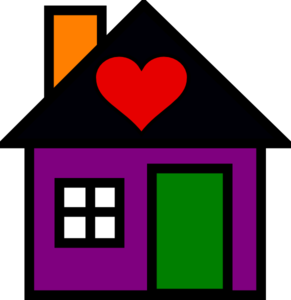 Although it has become common practice in Sarasota, as it has in so many other expanding American communities, there is a problem with the “build it and they will come” residential development model, one that is contributing to the breakdown of community spirit and the lack of affordable housing. Should we recognize the problem with this practice and redirect our energies in a more efficient and effective manner, we may be able to curb some of the hardships faced by the people of Sarasota. If we continue to turn a blind eye to it, or continue to watch it happen unabated, Sarasota will mostly become a community inhabited only by the financially wealthy, while falling very short of becoming the sustainable, eco-conscious community we say we want to be.
Although it has become common practice in Sarasota, as it has in so many other expanding American communities, there is a problem with the “build it and they will come” residential development model, one that is contributing to the breakdown of community spirit and the lack of affordable housing. Should we recognize the problem with this practice and redirect our energies in a more efficient and effective manner, we may be able to curb some of the hardships faced by the people of Sarasota. If we continue to turn a blind eye to it, or continue to watch it happen unabated, Sarasota will mostly become a community inhabited only by the financially wealthy, while falling very short of becoming the sustainable, eco-conscious community we say we want to be.
Let me give you an example.
Currently, a great many of the single family homes in the Hillview district were built in the 1950’s, and are of a certain style and size. With plot sizes around 9,000 square feet, the average house size is about 1500 square feet. As these houses age and decay, it is common practice for investors to buy the properties, knock down the old houses and build new ones. However, the new houses are well over 2000 square feet on the ground floor, and with the added 1500 or so square feet on the second floor, the next generation of Hillview residents are adapting to 4500 square foot homes on the same 9000 square foot parcels.
Although the new homes do look remarkably out of place next to the older homes, the size and pretentiousness of the new homes isn’t the biggest issue. Since this trend is growing, it may not be long until the older house look out of place.
The biggest issue is that the homes are not being consciously developed with the homeowners in mind, but largely built for profit with a home buyer in mind. In other words, these new homes aren’t being built for people, but for the market. Although Sarasota has historically relied on building and real estate as two of it’s top industries, in order to develop healthy, sustainable progress, we will have to temper our fervor for finance a bit, and use a more healthy, people-centric approach to residential development.
The problem is that potential homeowners don’t have any say in how their home is developed, what innovative features or building materials might be used, what energy efficient and alternative energy advancements might be incorporated, or how they would like to use the remaining square footage of the property. Instead, the developers build what they think will sell, making short-term cost effectiveness a key decision maker and relying on merely mainstream building practices instead of the newest innovations. Once the developers have built the house they THINK people will want to live in, they have doubled the value of the property, but undermined the greater intentions of the homeowner as well as the vibe of the neighborhood. Should Sarasota wish to be the sustainable, creative, and diversified community we claim to, we would be wise to give more credence to the community than to the market.
Shouldn’t the future residents of Sarasota have the options of using hempcrete, bamboo, recycled paper insulation, wool bricks, solar tiles, or the dozens of other less toxic and more sustainable building materials than what the developers can get for the best price? What about the homeowners that will want to use their yards to grow roses, fruits, vegetables, or herbs? Shouldn’t they be able to have a say in the footprint that their home makes?
If we’re really going to have the market in mind, we should consider that the best businesses operate for the customer. The problem with our current residential development model is that it operates more so for the devoloper to make a profit, with the homeowner getting some ancillary satisfaction for the duration of their stay in their investment. Can we build better homes for people instead of just building houses to sell? Don’t we deserve more from our living spaces than them being just another commodity?


